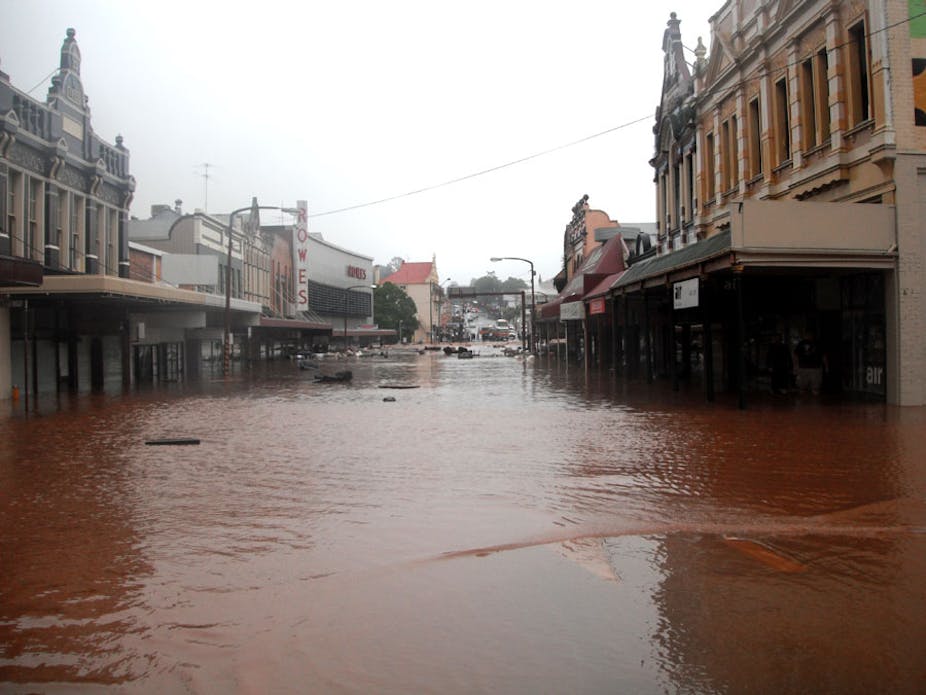As with the federal elections of 2007 and 2010, climate change appears set to feature again in the forthcoming September poll. Yet one of the most important aspects of the issue, that of adaptation to climate change, is again unlikely to garner any attention.
Climate change and its associated global changes (prominently sea level rise and ocean acidification) will produce profound social, economic, and environmental changes in Australia. Some of these changes will be gradual. Others will be abrupt and irreversible. There will be great costs (and also some benefits) for households, businesses, governments, and other institutions.
It is now widely agreed that adaptation will become a major focus for public and corporate policy around the world in coming decades. Preparing for climate change isn’t an alternative to mitigating greenhouse gas emissions; rather, mitigation is needed to curb the extent of future global warming.
But the momentum of ongoing global warming will continue regardless because of the gases released since the Industrial Revolution. Perhaps the global community will limit this warming to an average of 2°C or perhaps it will be higher; in any event, we need to prepare for the associated climate change impacts as best we can.
Australians are familiar with many of the effects of climate, but such familiarity is hardly the same as being ready and able to adapt to climatic change. This is one of those issues that gets larger the more closely it is examined.
Consider the length of the Australian coastline and its urban settlements, port infrastructure, and natural reserves. Consider the nation’s history and Australia’s highly variable rainfall and the resulting effects of droughts and floods on communities, businesses, towns and cities, and primary production. Extreme high temperatures take many lives and cause great losses to productivity. Much of our flora and fauna is unique and we have large natural reserves over land and sea; we are the custodians of many wonders of the natural world. Climate change threatens population levels and distribution of much flora and fauna, including raising the threats of species extinctions.
Climate change will exert a daily influence on the lives of urban Australians. Australian urban lifestyles will not somehow be immune from climate change impacts; consider how many people and enterprises have been affected by severe natural events in this year alone.

Our problem, nationally, is that we are currently very poorly prepared. Research is essential in understanding these risks, in knowing our response options, for understanding how to pay for adaptation, and considering what roles can be played by households, businesses, governments, and NGOs. Conventional markets produce only weak signals for adaptation research, for a variety of reasons. In short, this is an area of policy that necessitates government initiative.
Expressed charitably, Australia has come to this issue late. Although adaptation rated a mention in the first two national greenhouse policies of 1992 and 1998, it was a weakly conceived and shallow theme tagged onto various climate change impacts programs. Things were little better through the early 2000s. My rough estimate is that there were a few dozen research projects directly funded by the federal government on adaptation over more than two decades, excluding the CSIRO’s own program. But better late than never. In 2007, the Council of Australian Governments supported a $126 million program into climate change adaptation. Then Minister for the Environment, Malcolm Turnbull, awarded Griffith University the five-year program for the National Climate Change Adaptation Research Facility and its associated National Climate Change Adaptation Research Fund that opened for business in 2008. At last, Australia had a national adaptation research program worthy of the name.
The research program came together quickly and effectively. A national program was developed around a set of strategic themes: emergency management, freshwater biodiversity, human health, indigenous communities, marine biodiversity and resources, primary industries, settlements and infrastructure, and terrestrial biodiversity.
Each theme was led by an expert group and each produced their own research program and accompanying set of priorities. Importantly, the program sought to leverage research funds and encouraged projects that had other sources of research funding.
Up to now, there have been 144 research projects involving several hundred researchers around the nation. And outputs from these studies are now feeding into decision-making in the public and private spheres. It has been a wonderful achievement and a credit to Australian researchers and administrators.
Last week it was reported that the government would not be renewing the funding for NCCARF and its research program, which ends June 30 this year. NCCARF is looking for new funding, but as things stand its research program will finish at the end of June.
Polls of the electorate, the views of the op-ed writers, and paid political advisors will send forth electoral messages on key issues in the coming months, such as the state of the economy, national security, and the like. Yet, climate change threatens assets and resources of almost incalculable value, not to mention the associated social and environmental values. Meanwhile, Australia will have lost one its most important scientific facilities and research programs. But who will speak up on this issue?

